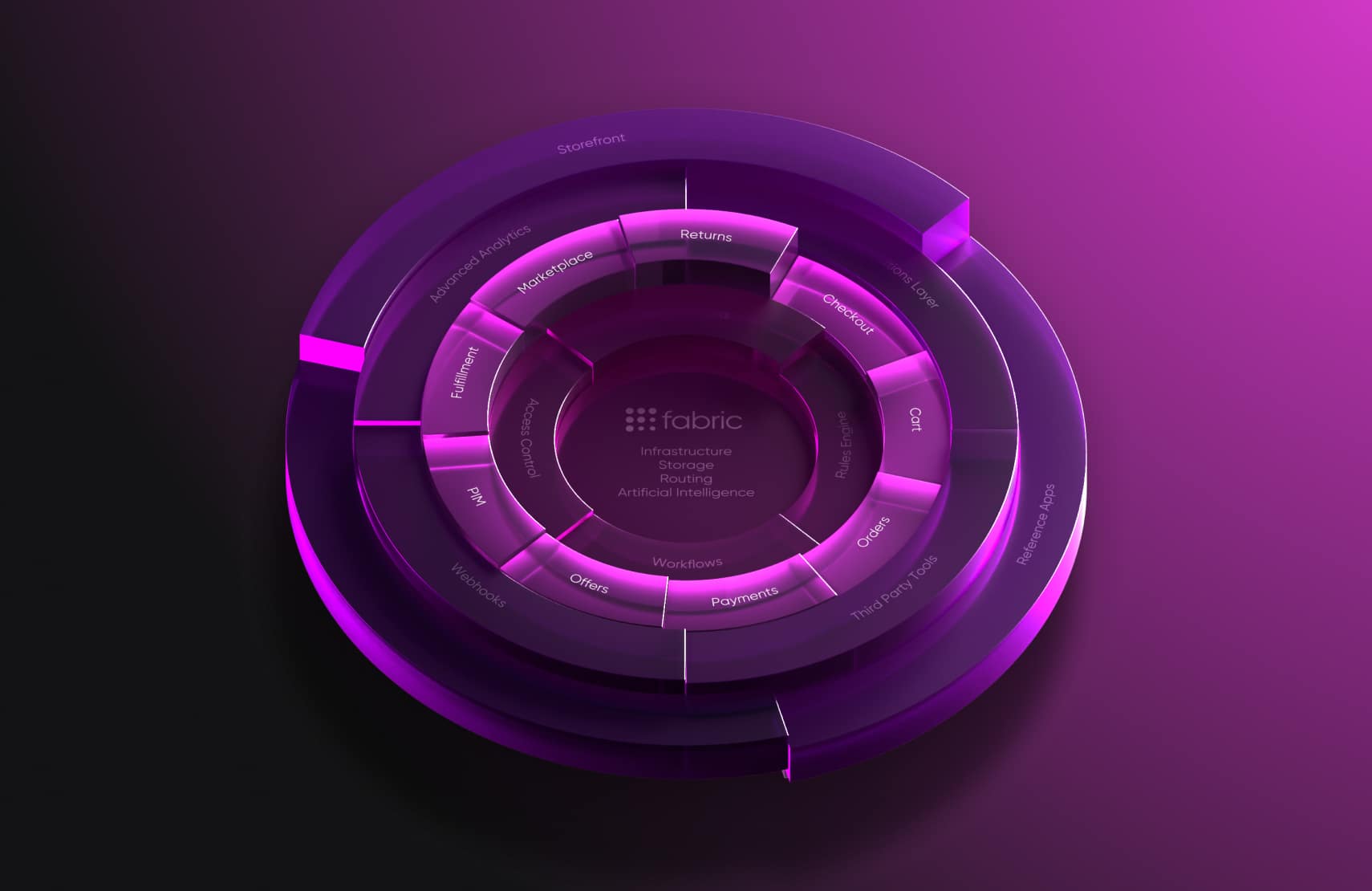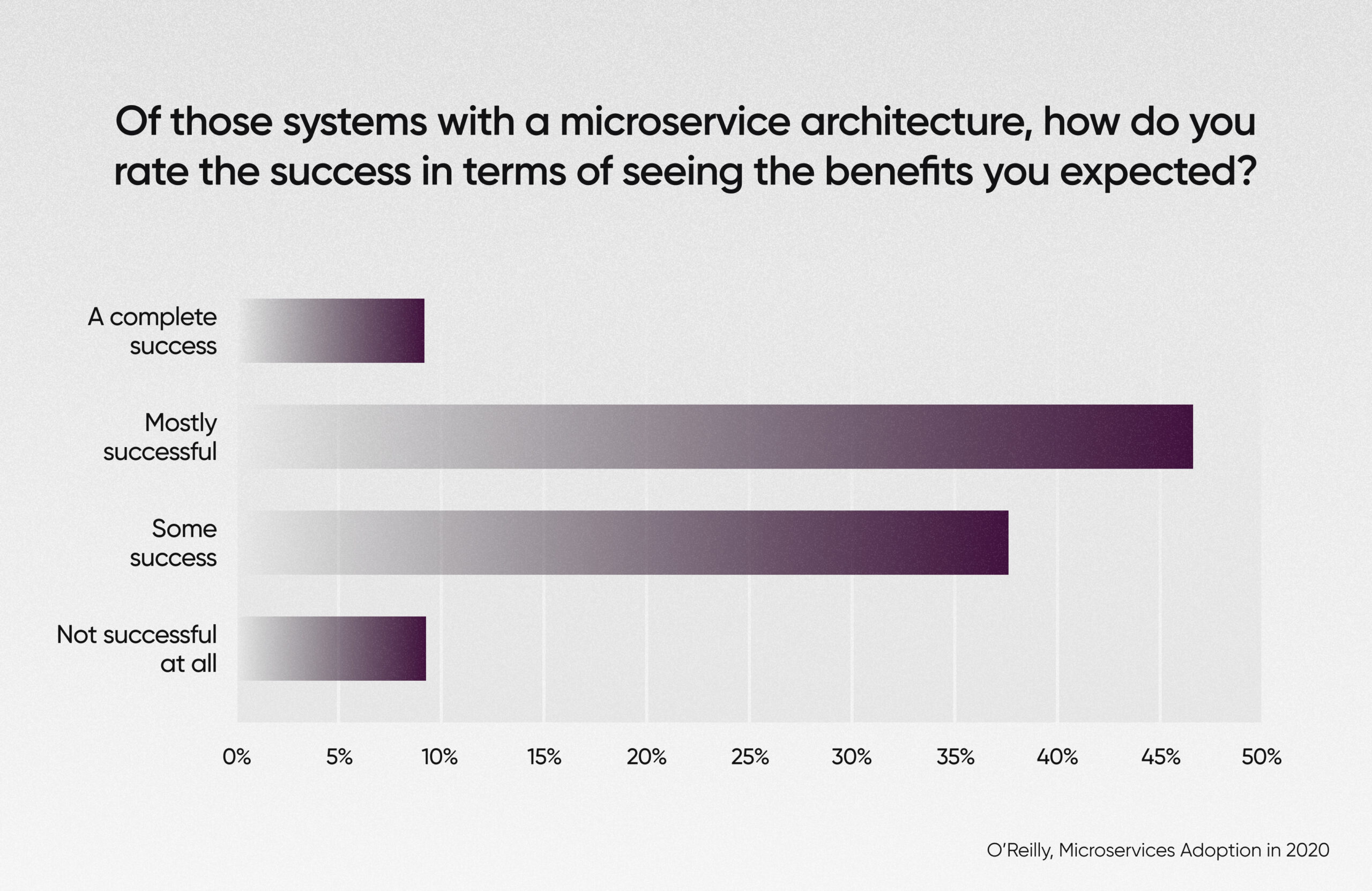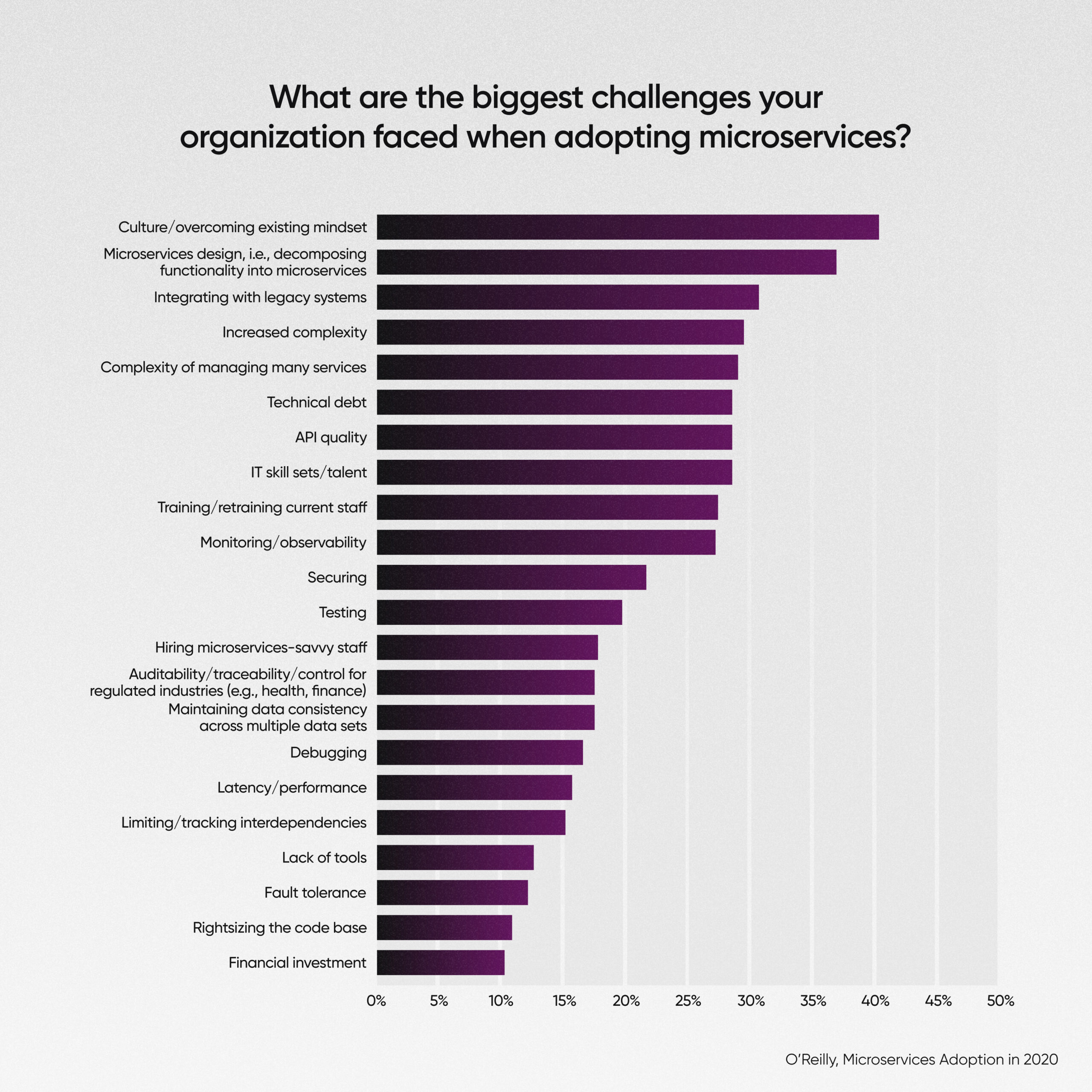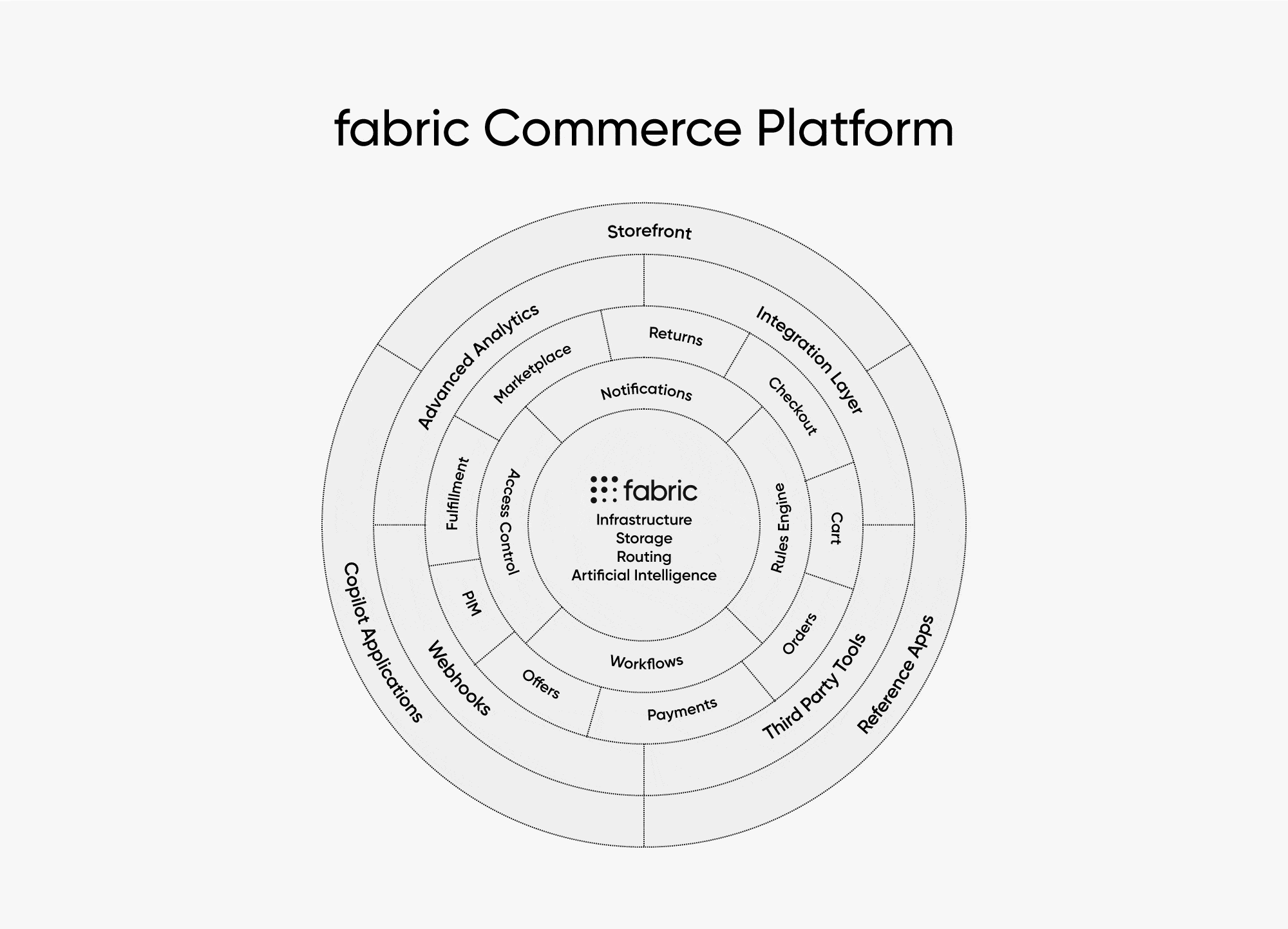Scalable, Flexible, Composable: Why fabric is the Last E-Commerce Platform You’ll Ever Need

Businesses that either outgrow their existing tech stacks, or want to modernize components, often require robust and flexible solutions to handle the growing complexity of their operations.
Headless commerce and microservices aren’t “cure-all” solutions and replatforming from a legacy platform to a modern platform is still exhaustive, difficult, expensive, and high-risk.
A commerce platform-as-a-service (PaaS) complete with core commerce services effectively solves the industry’s biggest pain points and de-risks replatforming.
fabric Commerce Platform is headless and modular technology that’s scalable, flexible, extensible, and composable, making it the last e-commerce platform you’ll ever need.
Sneak peaks and previews into some of the most electrifying trends in tech is one of the perks of having a finger on the pulse of e-commerce. From the rapid proliferation of mobile shopping to new omnichannel retail models, the buzz surrounding the future of commerce has never been more exciting.
But look past these innovations, and the untold story that’s percolating below the surface is the rise of commerce platforms-as-a-service (PaaS) and the acceleration towards the end of replatforming. Powered by next-gen headless and modular commerce technologies, the movement has finally reached an inflection point and is on the cusp of dominating the e-commerce landscape in 2024 and beyond.
How did we get here?
The concept of a commerce PaaS has been years in the making. From security risks to jeopardized system stability, Cyber Monday war rooms, website crashes, growing complexity, and mounting technical debt, anyone that has worked in e-commerce knows of the many challenges companies faced when using legacy commerce platforms in the past.
Back then, migrating off the likes of IBM WebSphere, Oracle ATG, or SAP Hybris was a hellish ordeal that required careful planning and some clever engineering. Without a single software vendor that offered a viable alternative, businesses that either outgrew these platforms or wanted to adopt newer technologies were forced to painstakingly build new customized microservices frameworks from scratch to suit their individual needs.
Fast forward to today and businesses are still facing the same challenges they did nearly a decade ago.
Retailers using legacy platforms that want to adopt new technologies to improve performance are quickly realizing that:
- 1. Headless commerce technologies don’t actually solve their challenges;
- 2. Microservices are not the panacea they’re claimed to be; and
- 3. Replatforming from a legacy platform to a modern platform is still a massive undertaking that’s grueling, expensive, and fraught with risks.
But if technologies have advanced by leaps and bounds, what’s preventing businesses from harnessing the latest innovations and realizing the benefits? What are some of the reasons why companies are embracing commerce PaaS to power their growth and success in e-commerce?
[toc-embed headline=”#1: The Constraints of Legacy E-Commerce Platforms”]
#1: The Constraints of Legacy E-Commerce Platforms
Most e-commerce platforms of the past were built with monolithic architecture. A monolith is a single, rigid, all-in-one unit where all the commerce functions needed to run an online business are built into one system. However, monoliths can be:
- Unreliable: A single point of failure makes them dangerously vulnerable to security risks. Minor issues affect whole applications and can threaten to bring entire systems down.
- Expensive: Scaling the application may require duplicating components that don’t need additional resources, leading to wasteful resource utilization.
- Inflexible: Even the tiniest software changes require wholesale updates and testing of an entire tech stack.
- Difficult to integrate: Building integrations with third-party systems can be a nightmare.
- Resource-intensive: Building new features can take time and consume valuable IT resources.
- Complex: All components are tightly coupled, making it harder to understand, modify, or extend the system.
- Slow: The huge amount of complexity and technical debt often slow the deployment of new features to a crawl.
Over time, endless customizations and glue code can result in a problem-plagued e-commerce platform that resembles Frankenstein’s monster. IT teams must spend all of their time maintaining and fixing broken systems rather than focusing on improving business operations, expanding core IP, or building differentiating features that attract and retain customers.
Simply “going headless” is not enough
Today, headless commerce has exploded in popularity and is being touted as the future of e-commerce architecture. “Going headless” decouples the front-end presentation layer from the back-end commerce functionality, which allows for greater flexibility and customization.
But in the ruthlessly competitive e-commerce landscape, companies must do more than just switch to a headless monolithic platform. With U.S. retail sales projected to grow to $5.08 trillion in 2023, many companies recognize the need to migrate off legacy monolithic applications if they want to stay competitive.
In order to scale with freedom and flexibility, companies are turning to microservices-based architecture instead. However, contrary to popular belief, a migration from a monolith to microservices is not the magic bullet that some businesses think. While microservices offer many benefits, they’re not a one-size-fits-all solution.
[toc-embed headline=”#2: Success Remains Elusive With Microservices-Based Architecture”]
#2: Success Remains Elusive With Microservices-Based Architecture
With microservices, companies can break down individual commerce functions into separate applications, or modules, that communicate through the use of APIs (REST or otherwise). This modular approach—made possible by a post-WEB 2.0 world—means that companies aren’t burdened by having their own “platforms” (or infrastructure) anymore. The fundamental shift allows companies to pick and choose best-of-breed commerce technologies to build fully-customized technology stacks that suit their specific needs.
That being said, microservices architecture also introduces additional complexity and coordination challenges to a technology stack, requiring robust infrastructure and careful management of service dependencies to ensure smooth operation. A recent survey by O’Reilly asked over 1,500 software engineers, managers, and executives about their experiences with microservices, and their responses were eye-opening.

Although 77% of organizations adopted microservices-based architecture, only 9% reported “complete success”, while 37% reported “some success” and 8% reported “no success at all.” These results not only provide a glimpse into the challenges that organizations face, but also highlight the immense opportunity that lies ahead for de-risking the migration process.
From integrating microservices with legacy systems, to dealing with higher complexity, to managing many disparate services simultaneously, companies need to overcome a variety of obstacles to successfully adopt and leverage microservices architecture in their operations.
Even the most experienced technology teams have difficulty navigating the intricate challenges involved with implementing and managing microservices, including data orchestration, scalability, fault tolerance, and API orchestration. Below are just a few of the top challenges that organizations face when adopting microservices:

What are organizations supposed to do? A better approach to MACH
Today, the MACHLASH is real. MACH is an acronym that stands for microservices-based, API-first, cloud-native, and headless, and its adoption is supposed to “improve your tech stack in every way.” But MACH architecture itself is not a panacea and it still carries significant risks that can negatively impact operations.
One way to reap the benefits while mitigating risks is to simply better prepare.
Microservices (along with headless architectures and APIs) originate from service-oriented architecture (SOA) principles. Domain-based separation of concerns, strong fundamentals in managing and automating Infrastructure as Code (IaC), and aligning the objectives of scale correctly for the organization are very helpful first-steps when adopting a cloud-based API framework.
Companies must also realize that success requires large investments in terms of time, resources, and expertise, which puts strain on the budgets and capabilities of organizations. The potential risks, coupled with the sheer complexity of adopting an array of disparate microservices, make it crucial for companies to carefully assess and plan their migration strategies to minimize disruptions and ensure a successful transition.
Is replatforming the answer?
Replatforming, on the other hand, involves more than just architecture. If executed properly, switching platforms can be a game changer and lead to improved performance, scalability, and additional benefits for retail businesses.
Yet the failure rates of replatforming projects are high. Oftentimes, businesses underestimate their difficulty and fail to take into account the hidden dangers lurking in the replatforming process itself.
[toc-embed headline=”#3: The Hidden Risks of E-Commerce Replatforming”]
#3: The Hidden Risks of Replatforming in E-Commerce
In e-commerce, replatforming is the process of migrating an application, system, or technology stack from one platform to another, with the aim of improving performance or unlocking some other business benefits. The goal is to gain the advantages of the new platform while minimizing disruptions to the existing functionality and user experience.
Replatforming is often viewed as a necessity and not a choice. Some retailers might outgrow their e-commerce tech stacks and require more robust and flexible solutions to handle the growing complexity of their operations. Others might need to modernize different components of the software stack, and view replatforming as the right trade-off from a risk and reward perspective for the customer and the business.
That being said, the replatforming process can be long and daunting for even the most seasoned engineers.
Retailers looking for a quick and easy “magic bullet” will often embark on the journey with great enthusiasm, only to discover that the process is filled with dangers and pitfalls. Like peeling back the layers of an onion, they’ll frequently discover root causes of fundamental problems within their e-commerce stacks that have quietly developed—undetected—over time.
Then there are the hidden costs
Today’s commerce platforming industry forces customers into making buying decisions that aren’t born out of necessity. To get the sale, providers pressure customers to conflate necessary modernization with redundant and often unnecessary migrations. This also incentivizes providers to bundle, package, and build Frankenstein solutions that don’t always provide flexibility for the customer.
There are consequences to these actions. Breaking apart a monolith into multiple best-of-breed services means more to manage and more directions to point fingers to when something goes wrong. Without the right technology partner and a proper strategy in place, replatforming can deteriorate into a dreadful experience and become one of the most difficult and complex challenges an e-commerce business will ever face. This is the wrong lens and an anti-pattern in SaaS that needs to change.
That’s where fabric comes in.
For retailers seeking a better e-commerce solution, below is a high-level illustration that highlights different layers that make up the fabric Commerce Platform.
[toc-embed headline=”fabric Commerce Platform: Purpose-Built for Brands and Their Customers”]
fabric Commerce Platform: Purpose-Built for Brands and Their Customers
“As much as we care about fabric and embrace them, fabric cares and embraces us. And that sort of dual partnership, that is just the perfect marriage of the two companies.”
- Jay Topper, EVP and Chief Digital Officer at Chico’s FAS
In the SaaS industry, corrupted incentives, unnecessary costs, and arbitrary sales motions force customers to make less than ideal business decisions. But what companies really need is help. fabric exists to change this pattern—and we’re only just getting started.
Here at fabric, we’ve built a software agnostic “platform-of-platforms” that supports the use of any platform or service—thereby freeing companies from the shackles of the e-commerce monolith. It effectively solves our industry’s biggest pain points by lowering total cost of ownership (TCO) and allowing brands and retailers to evolve over time to create truly differentiated shopping experiences for their customers.
More importantly, fabric’s fully-composable and extensible platform also offers a comprehensive suite of commerce solutions and APIs so that fast-growing businesses can simply choose the tools they need to scale their retail operations. Our products include a distributed order management system (OMS), a pricing and promotions engine (Offers), a product information management system (PIM), and more. The platform also integrates seamlessly with our dropshipping marketplace platform (Dropship), which allows retailers to rapidly expand their product assortments without the risk of managing inventory.
Today, we’re laser focused on ensuring our customers are successful. We’re adding direct and indirect value by delivering exceptional products and services, being great partners, and building the last platform that our customers will ever need.

CTO @ fabric. Previously software development @ Amazon and Williams Sonoma.
